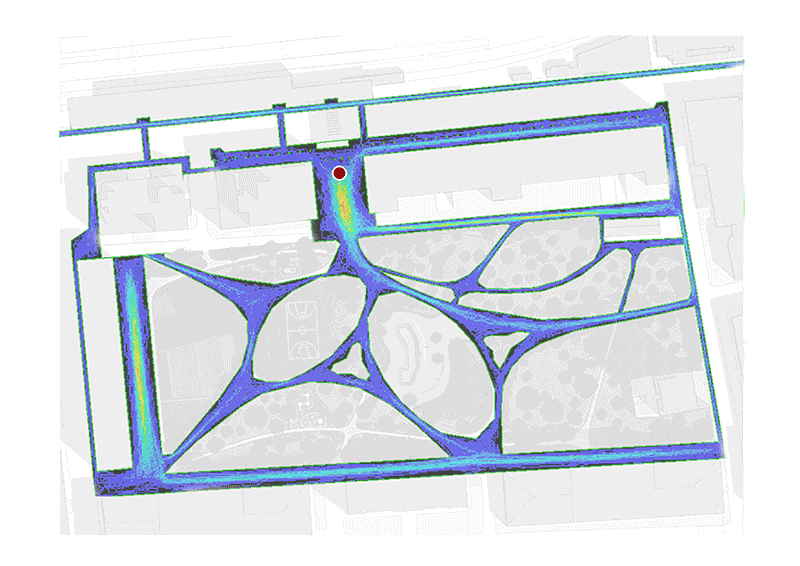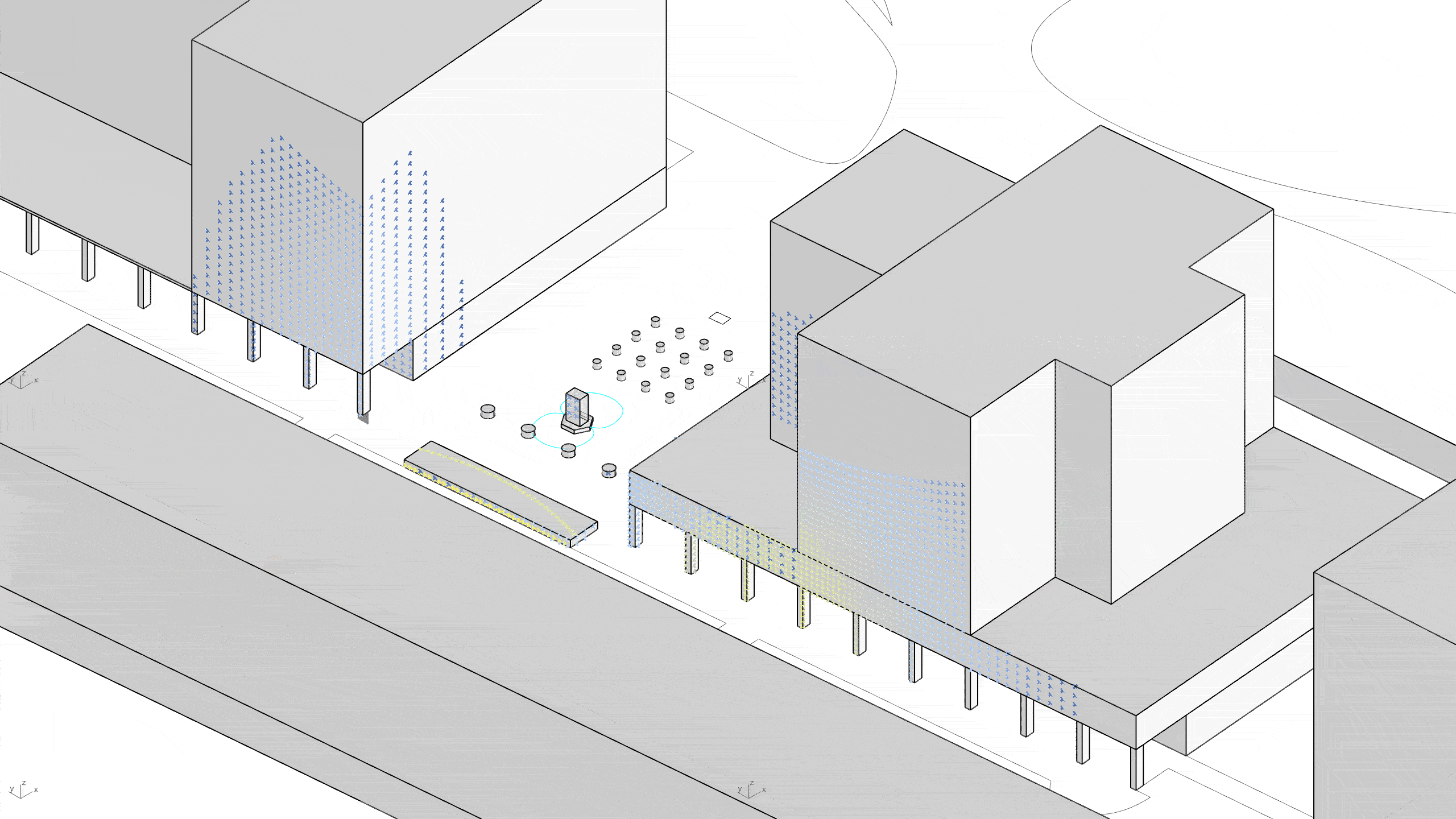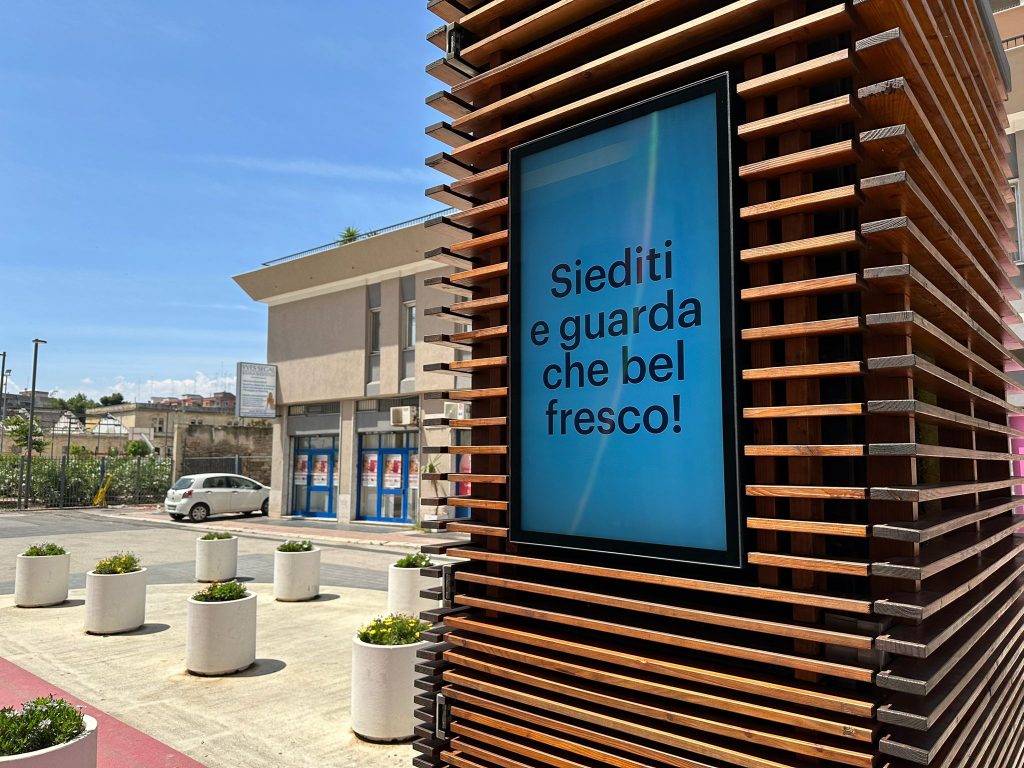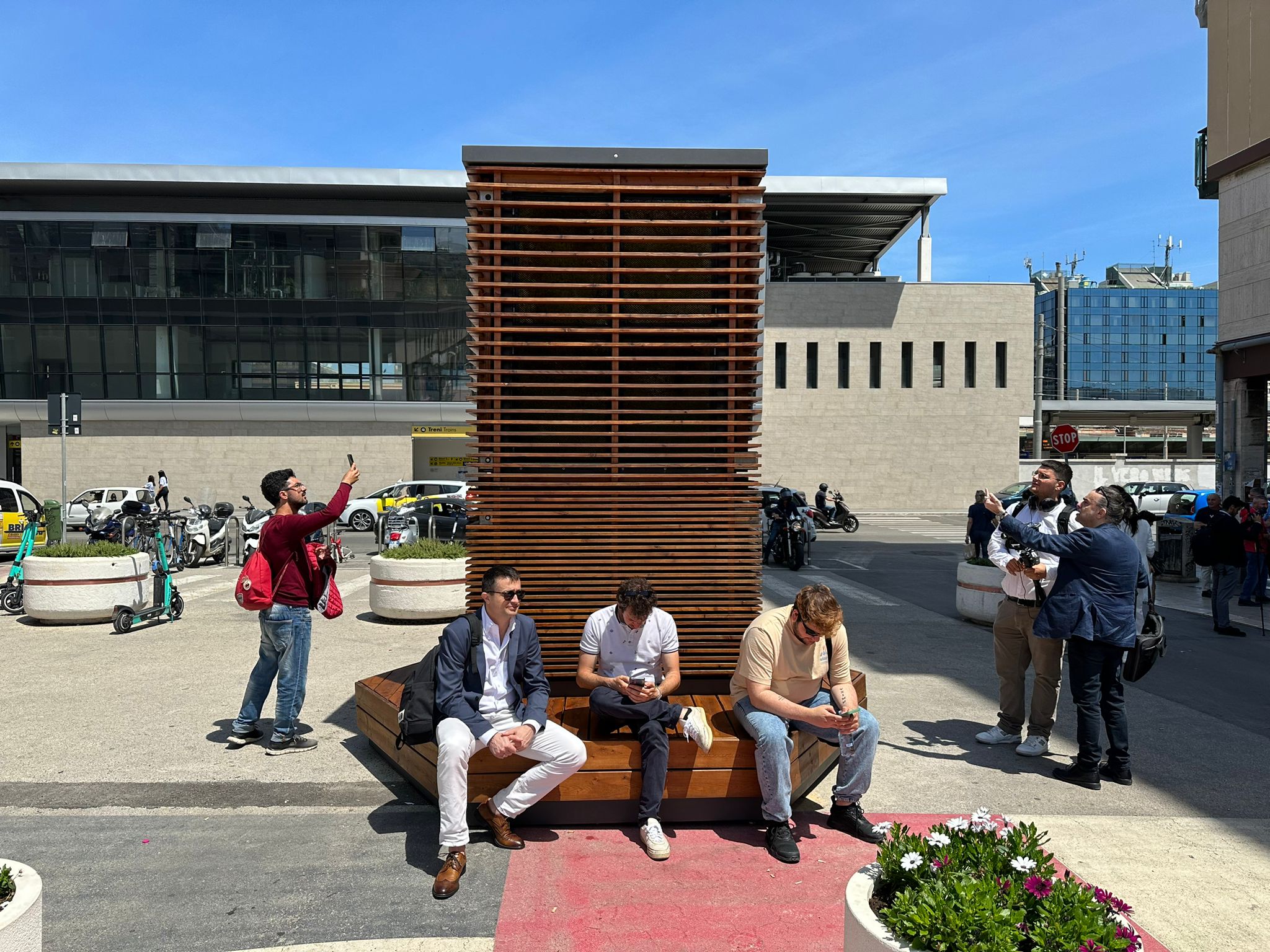The encounter between neuroscience and architecture continues to produce results of considerable interest. The research developed offers both practical and theoretical support for the design of spaces that are sensitive to the psycho-physiological well-being of users and their corresponding neural processes. The study of Pedestrian movement within an architectural space, a topic that has always garnered the attention of designers and is also the subject of various neuroscientific investigations, enabled teams TUNED and R&D to identify the positioning and orientation of the City Tree in Bari.
It is possible to analyse the acquisition and use of spatial knowledge at the cognitive level using neuroscience. Specifically, these abilities enable people to orient themselves in the built environment, memorize paths, and move to accomplish set cognitive goals. Thanks to the application of environmental psychology, it is also possible to investigate from a behavioural and perceptual point of view. In fact, there is scientific evidence that shows how the geometric structure of space influences one’s perception of it and consequently the behaviour that results from it, and in turn their decisions.
Pedestrian movement can be of two types: attracted and natural. In addition to attracted movement, attributed to the presence of activities and “anchors” (attractor points), there is natural movement whose distribution is due to the articulation of paths, the distribution of components that make up the network of the architectural layout, and the number of changes in visual perspective along the path. The perceptual dimension of space is to be considered fundamental in guiding natural movement and in determining the preconditions by which we use spaces.
The perception of space in its totality, during navigation, occurs by bringing three elements into action: reference objects (landmarks), complexity of the spatial layout, seen as the number of rooms and corridors and their configuration, and perspective, to be understood as the knowledge the individual has of the place and which can lead him to estimate distances and depth. Through the interaction between these three variables, the individual constructs a mental map of their environment, a simplified representation of space that enables them to orient themselves and navigate the space.

By analysing the effects that the morphology of a space has on our cognitive processes, it helps to increase the quality of experience of a built space: decreasing the stress generated by crowding, excessive visual stimuli or lack of them, and the difficulty in identifying the goal to be reached which often ends in frustration.
The latest discoveries in science regarding human navigation make it possible to approach space design by applying an “evidence-based” method, with the goal of improving the experience of built space. Starting with the knowledge of neurophysiological responses to stimuli during navigation, and the resulting mechanisms of orientation, path memorization, and decision-making processes, the design of the geometric space of a place can “accommodate” human behaviours. Thus, morphological analysis allows us to highlight the relationship between space and movement, with the aim of analysing the “social role” of space by measuring its potential for activating movement patterns in groups of people.

In defining the placement and orientation of the City Tree in the city of Bari, three main aspects were considered: the spatial morphology of Largo Sorrentino, the movement of people, and the impact these have on visual perception. Thanks to the application of research in neuroscience and environmental psychology, the position and orientation of the City Tree was defined for the potential effects it may have on psychophysical well-being starting with the degree of visibility, which facilitates its attainment and the generation of a meeting place.
By using an algorithm, it was possible to calculate the potential visibility from all points of Largo Sorrentino. In addition, the place where the City Tree was placed is the one where it is was the easiest to find an equilibrium between visual stimuli received and the possibility of a restorative break. The fresh air coming from the device and the planters already present provide an added advantage.

This approach also made it possible to calculate the ease of access, with the point chosen being the one where the probability of the City Tree falling within the field of view of passers-by is the highest. Orientation, on the other hand, provides visual cues to pedestrians moving along the arcade, also providing information for those waiting for public transportation.
The team within Lombardini22 who developed the research are:
Viola Cambiè, Consultant Engineer, R&D, Computational Designer, DDLAB
Federica Sanchez, Architect and Neuroscience consultant, TUNED
Ashwanth Ramkumar, Architect and Neuroscience consultant, TUNED

